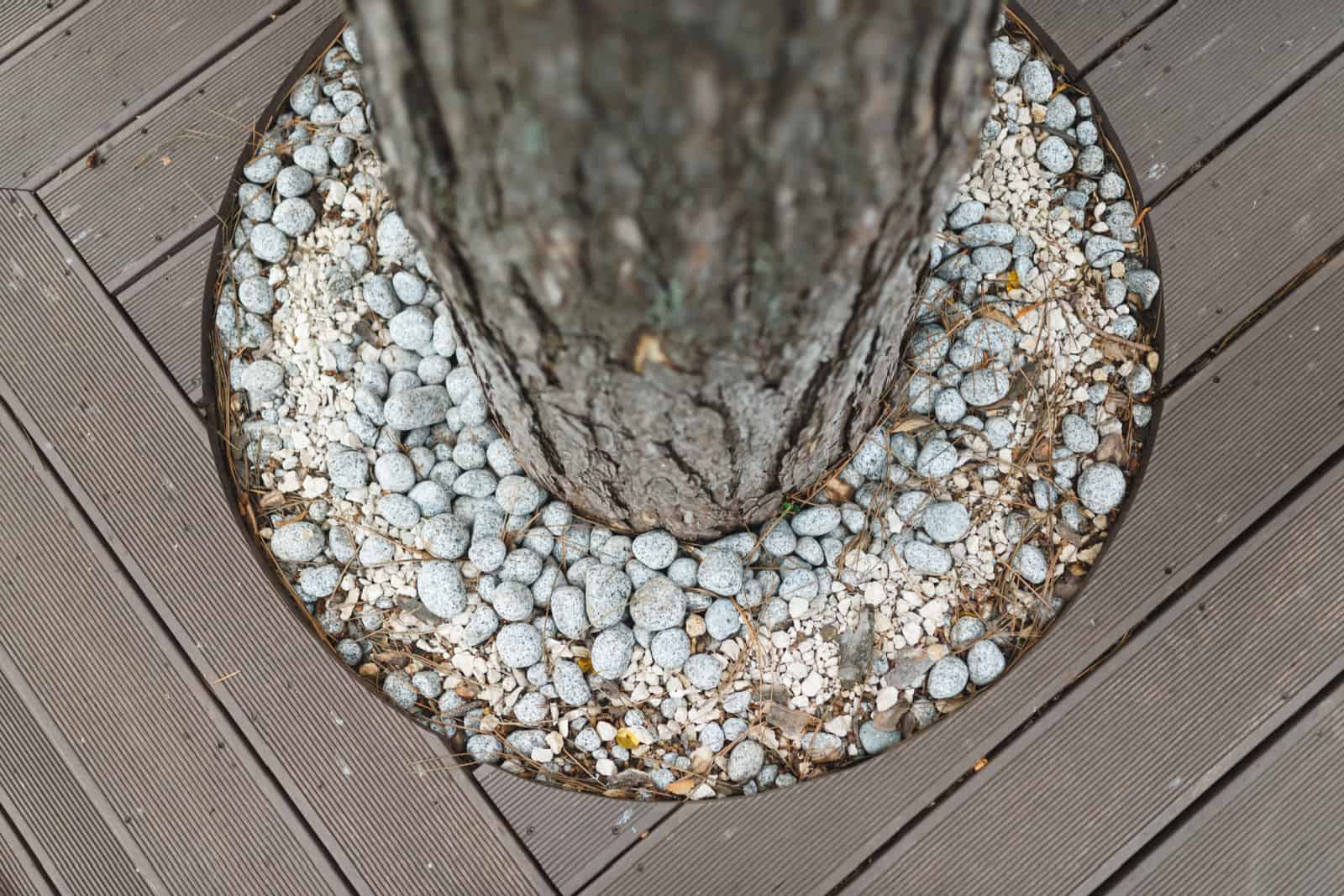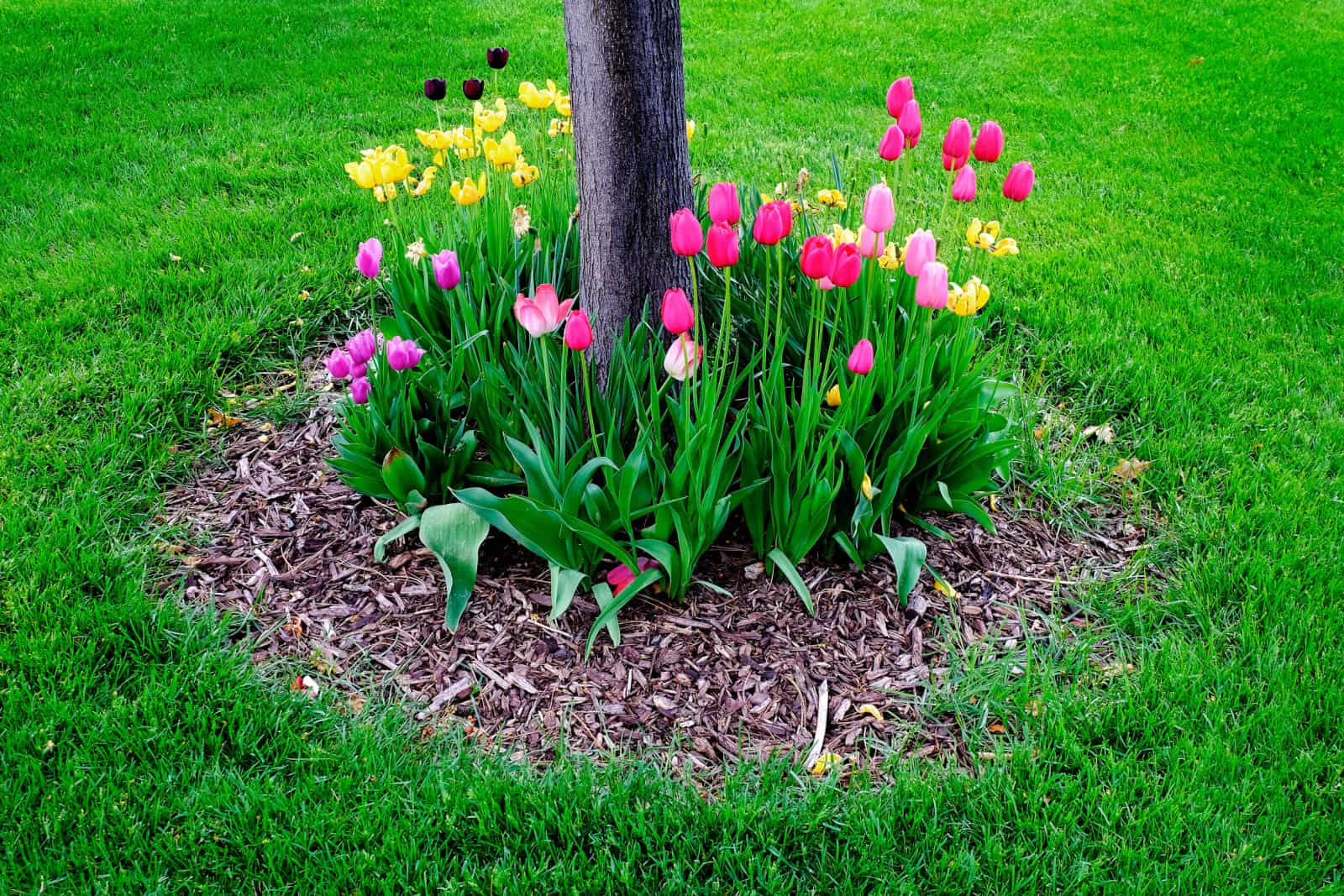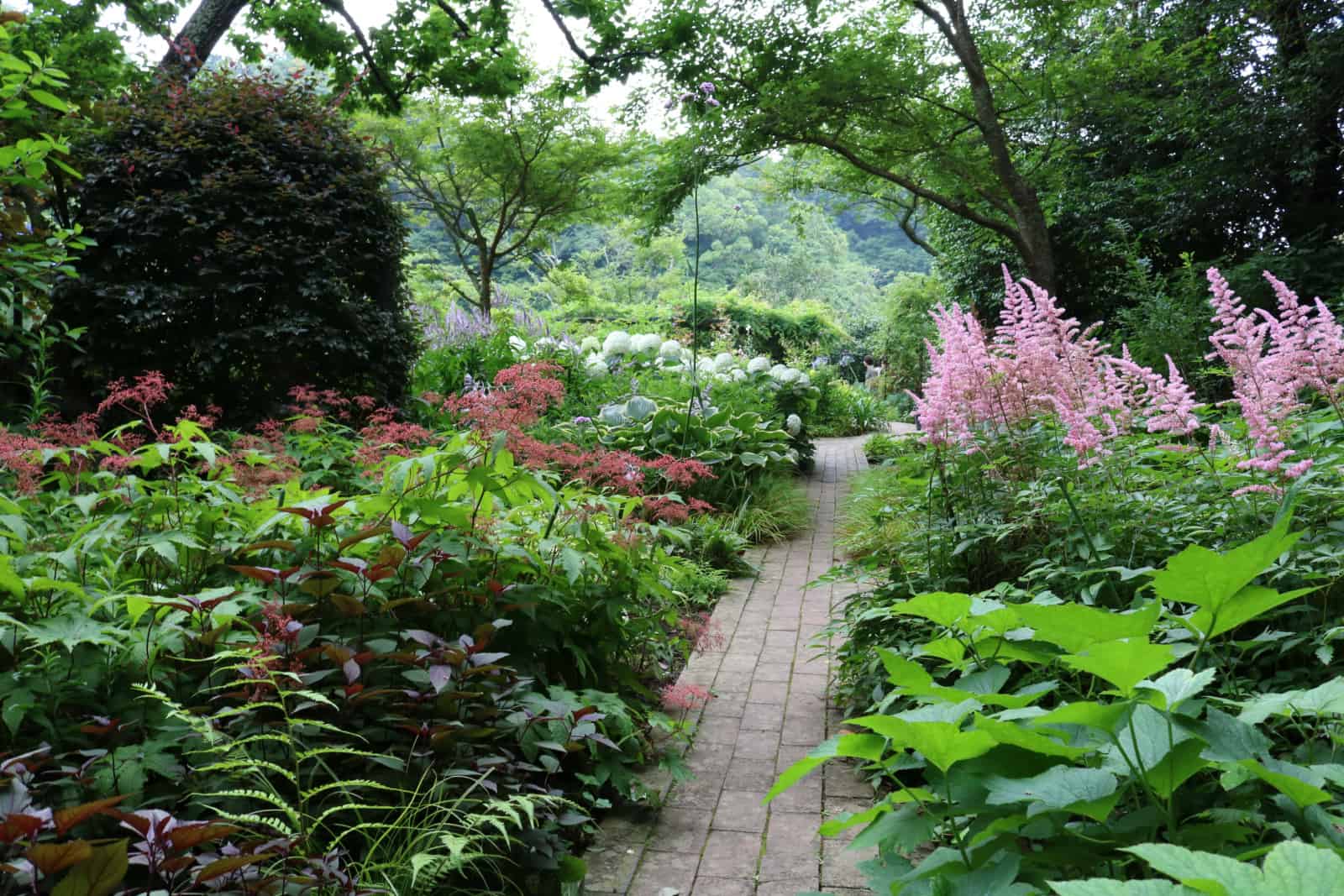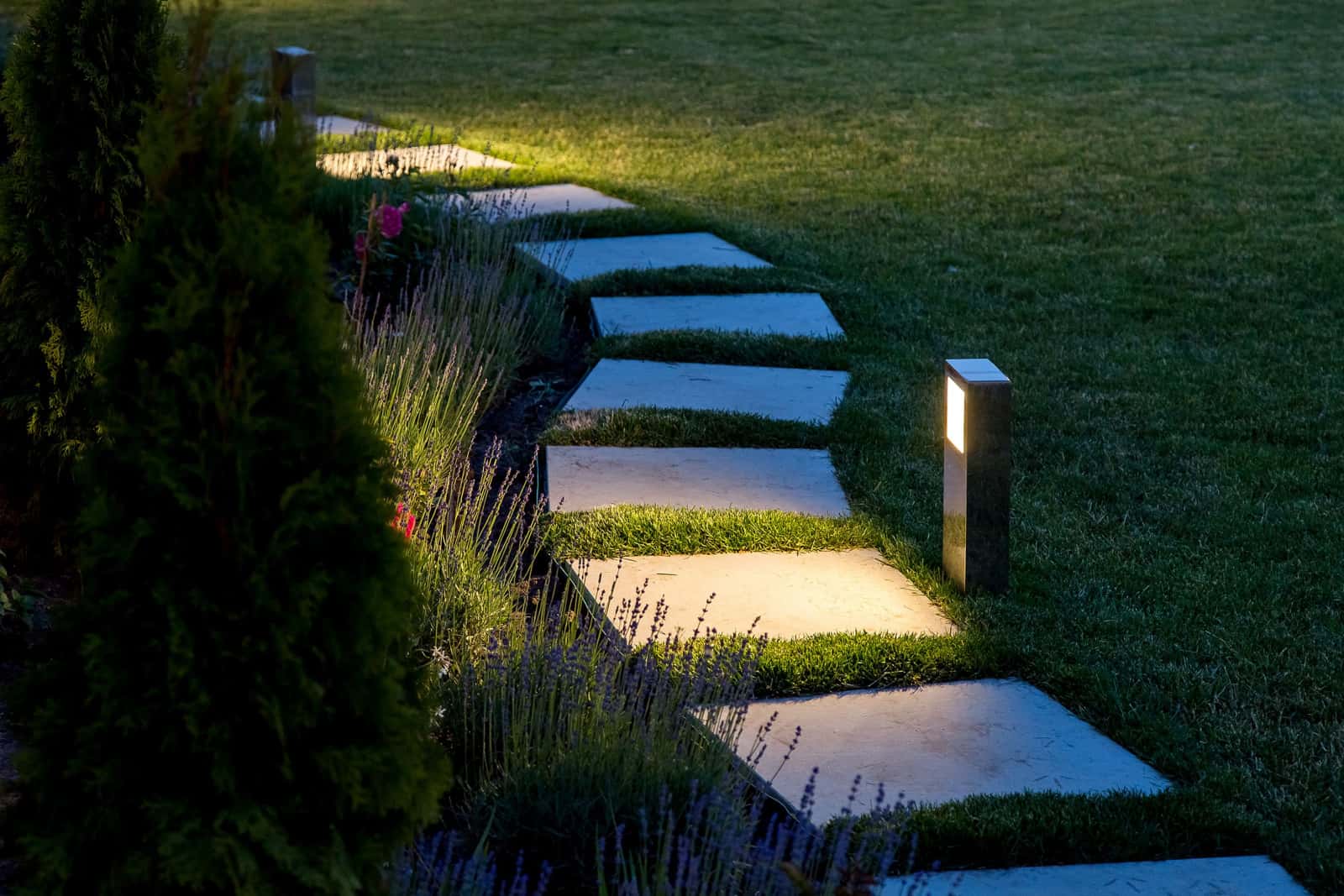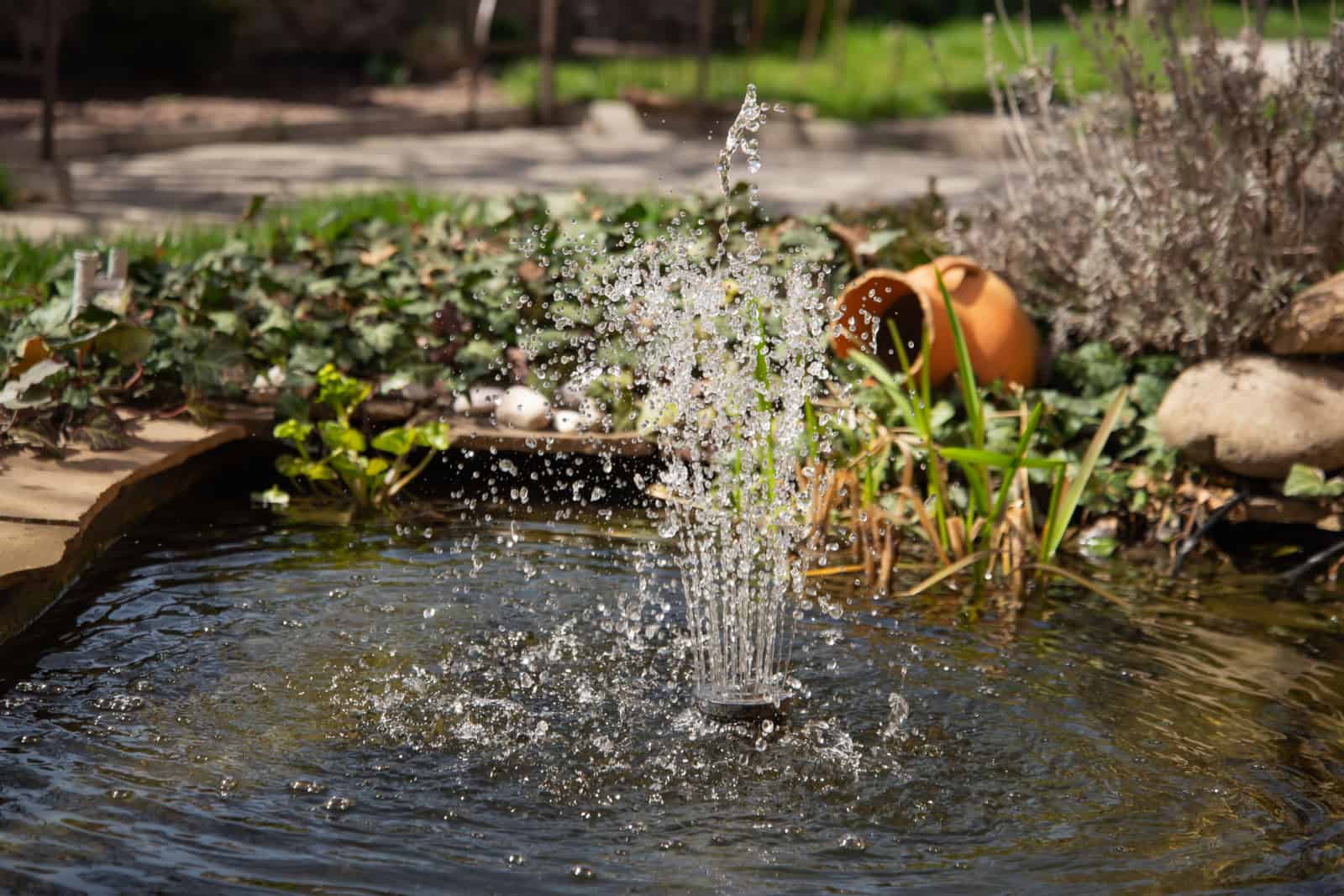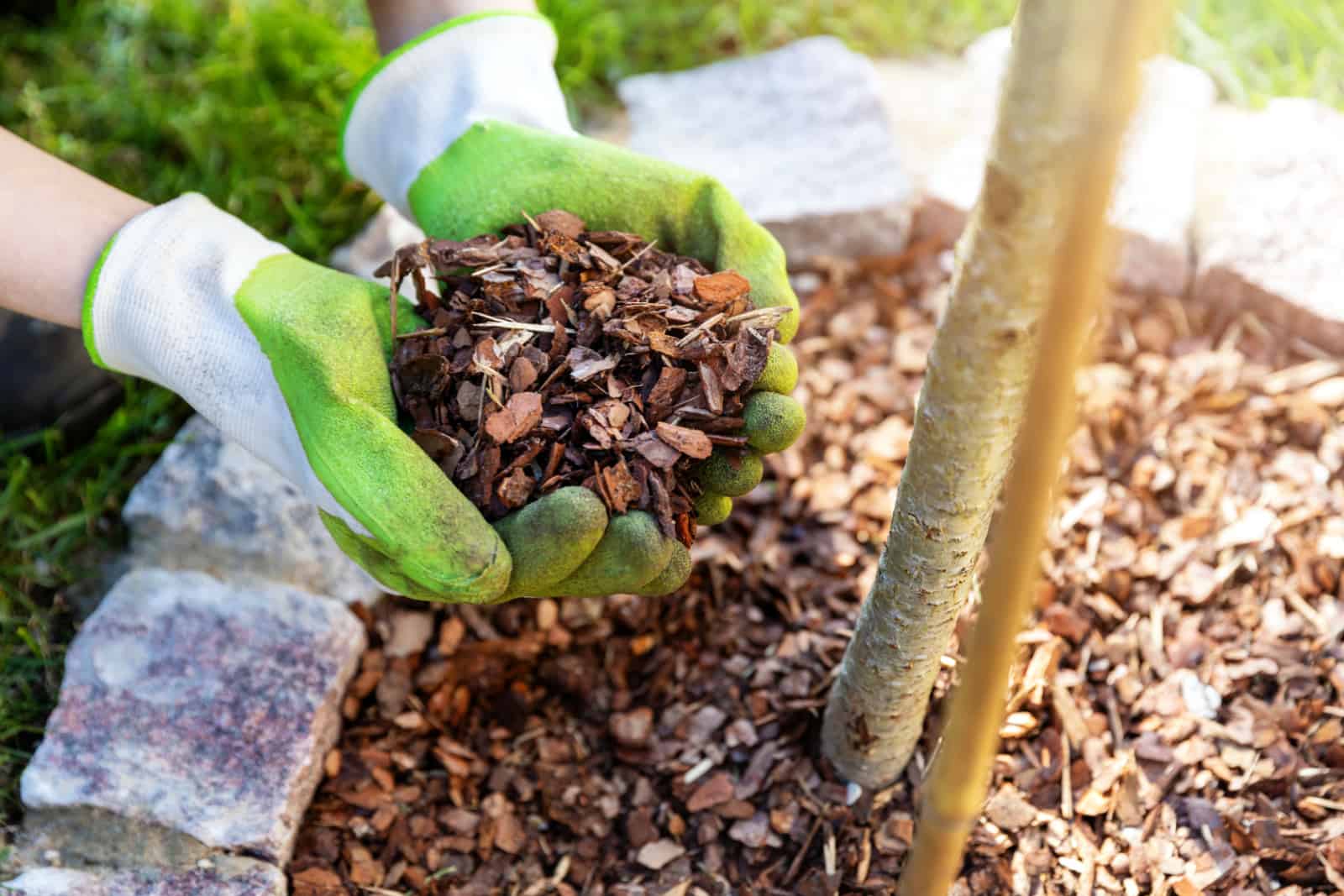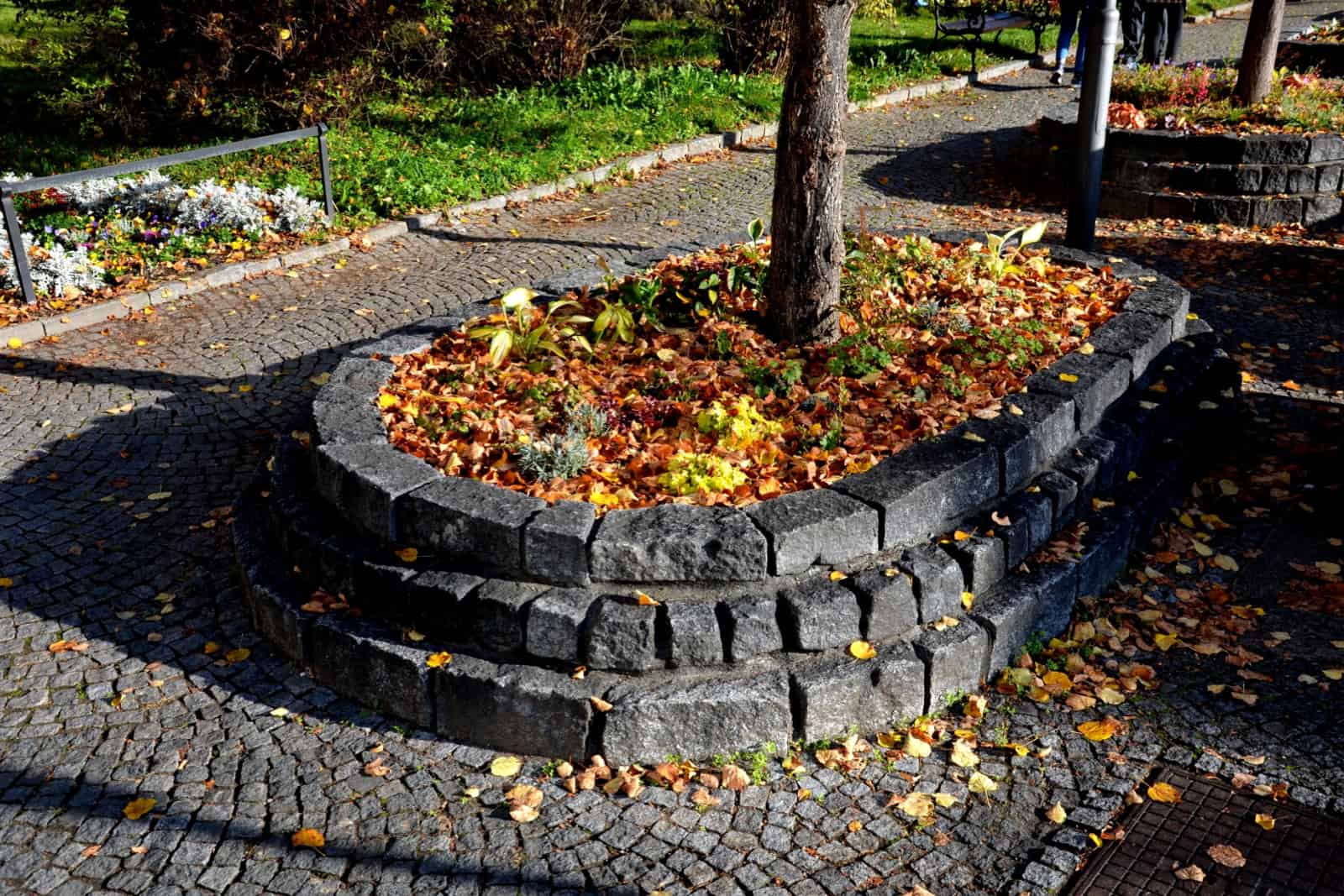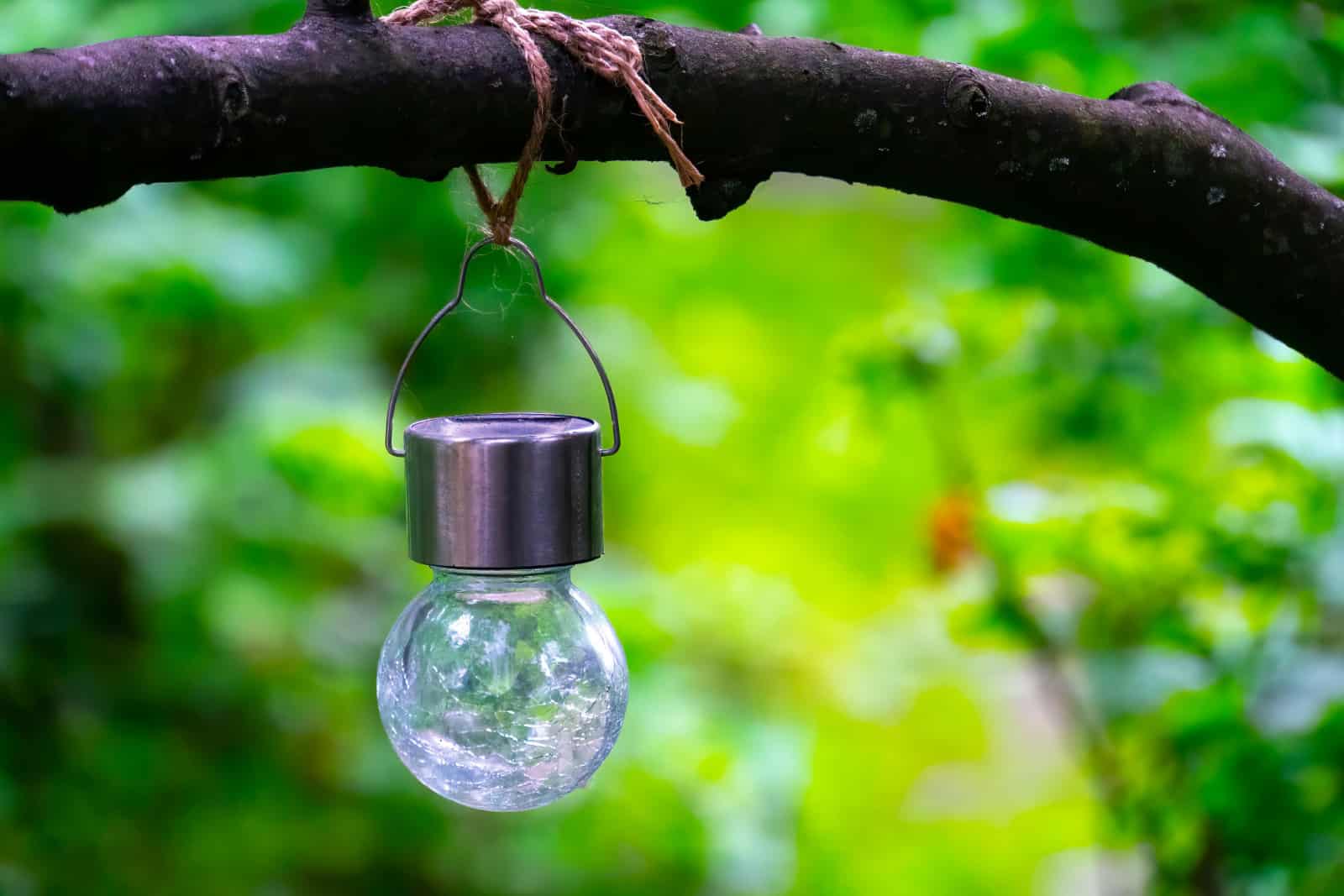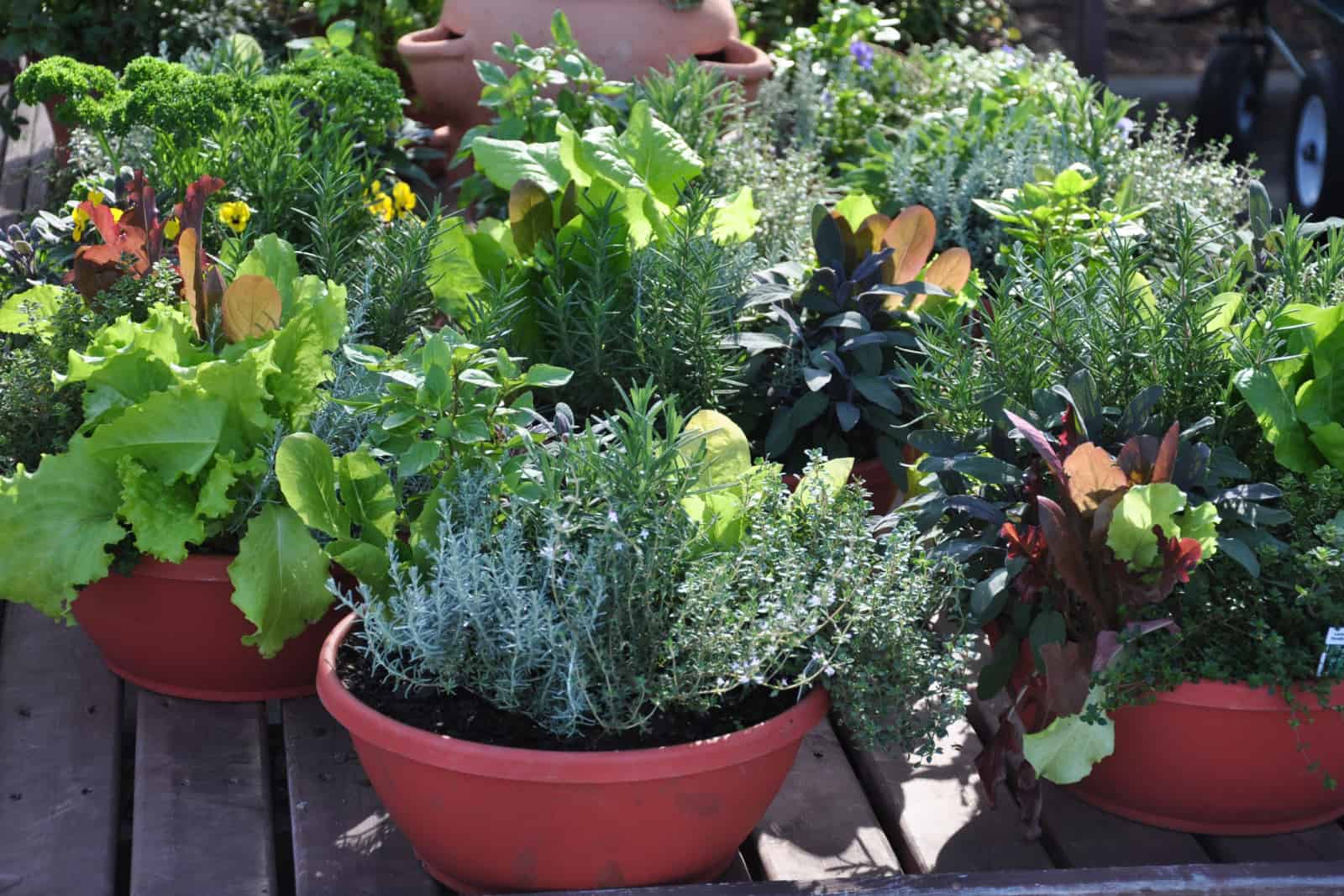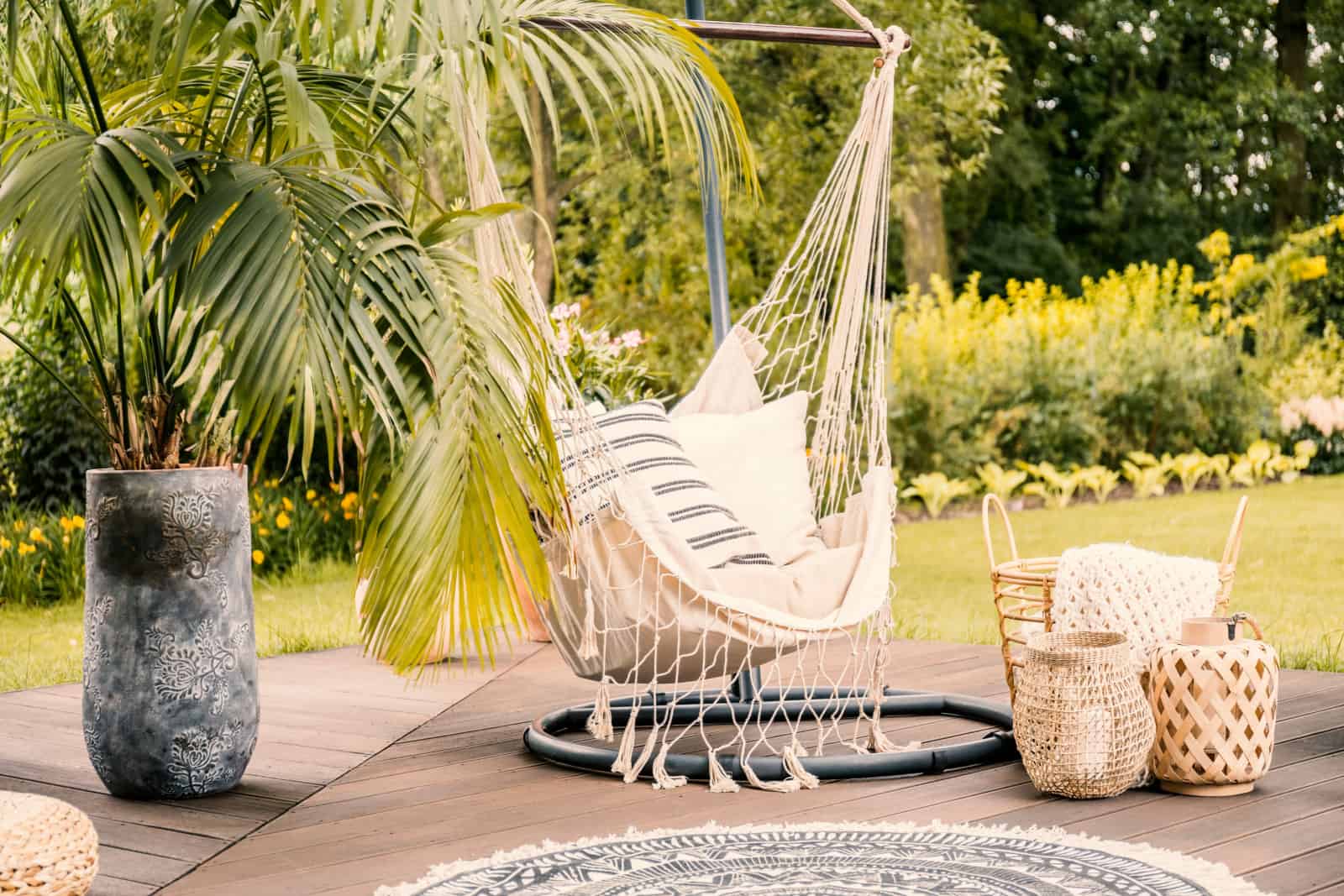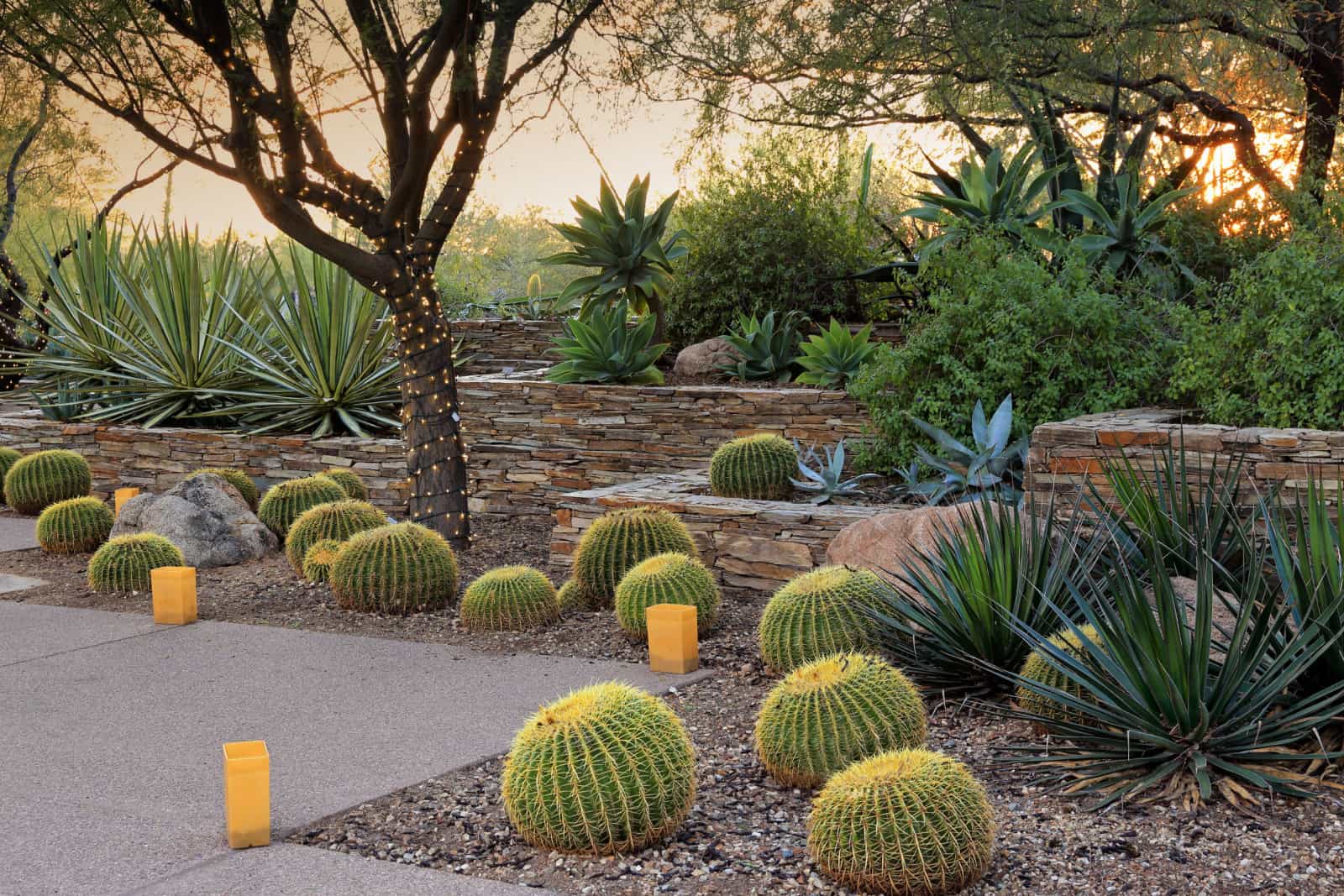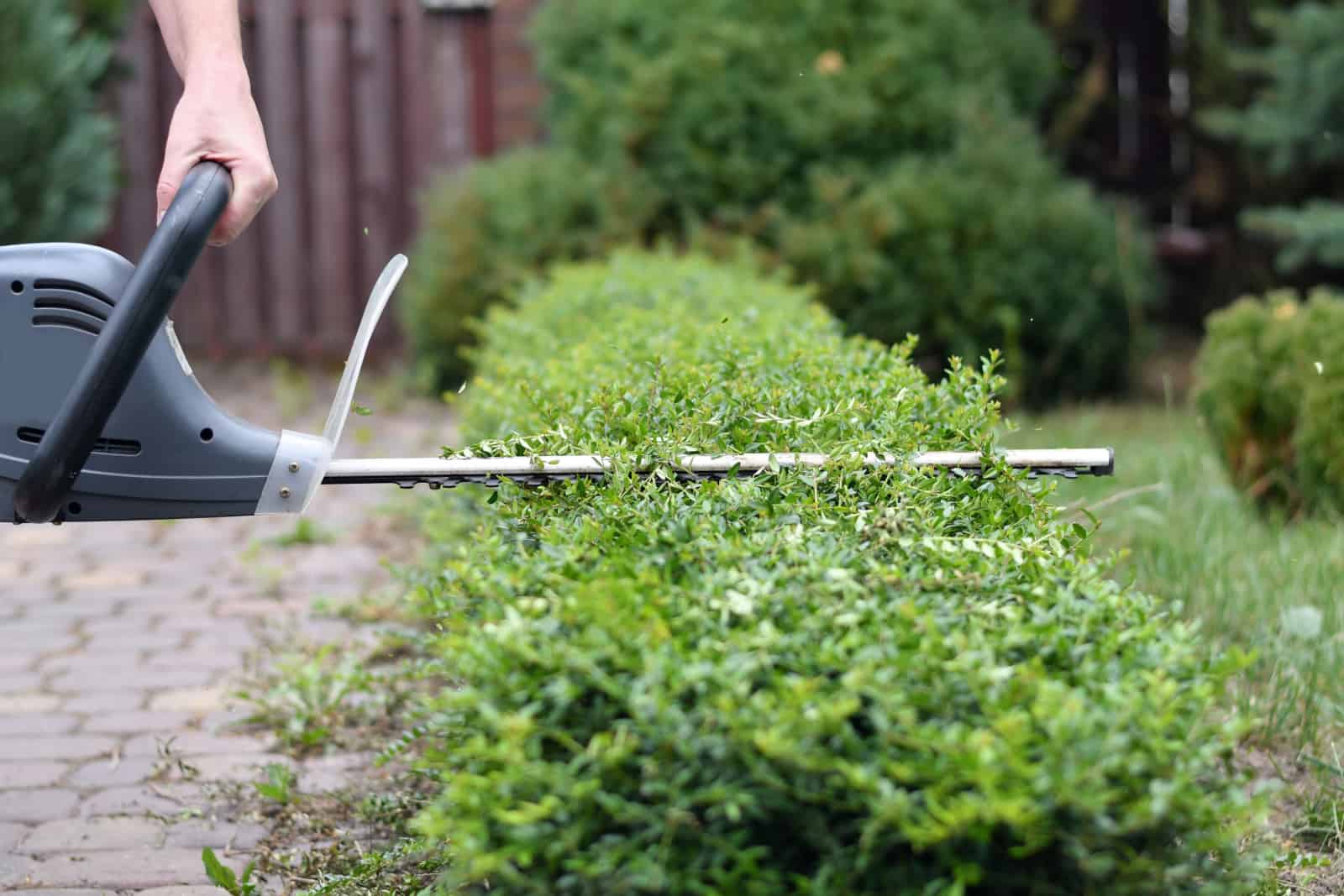Have you ever wondered how best to use the space under and around your trees? The large roots of mature trees may have made you question if that’s even possible.
Luckily, there are many things you can do with this space. I’ll show you 14 landscaping ideas for around trees so you can transform your yard into a captivating masterpiece.
Let’s dive into the world of tree-centric design!
1. Add Rocks Around The Tree Base
Landscaping around trees using rocks is my favorite method! All you need to do is dig a 2-3 inch deep trench and lay the first level of rocks. Add more layers of stones until there aren’t any gaps and you’re satisfied with the height.
You can also add gravel to get a more dramatic look. The only thing to pay attention to is moving the stones approximately 8 inches from the tree trunk.
Incorporating plants into this design is another method that can help you create a captivating landscape.
2. A Tree Ring
Landscaping around trees typically involves making tree rings because this is the most straightforward and beautiful technique.
Adding different elements around the tree trunk is cost-effective and not time-consuming, which is exactly what all gardeners want.
Anything can be used for tree rings; from the above mentioned rocks to flowering plants, statues, pine cones, or succulents. It’s all up to your personal preference.
The most important thing is to move these elements at least 8 inches from the trunk.
Remember, our first goal is to make our trees healthy!
3. Shade Garden
Don’t worry, this method isn’t about curtains or other things that create shade; it’s about growing plants that enjoy shade and don’t need much light to thrive.
Surprisingly, many plants enjoy partial shade conditions. For instance, hostas, coleus, heuchera, and Golden Euonymus are shade-loving perennials that will look fantastic in your yard. And best of all, these plants don’t need to be replanted every year!
4. Stone Pathway
You can build a pathway to and from your tree(s) using stones, bricks, rocks, or other similar construction supplies. Plant bright flowers and greenery on the sides of the pathway to create interest.
The great thing about this garden design is that you can incorporate other elements and techniques for more beauty. For instance, you can add shade-loving plants, make a tree ring, or combine them with some of the other designs listed below. The sky’s the limit!
When making pathways around trees, you need to plan ahead for what to do with the roots, i.e., ensure adequate spacing between the roots and the pathway.
It mainly depends on the size of the tree and its roots. For example, if you have a large, mature tree, you can create a pathway between their roots. If your tree is juvenile, make sure you leave enough space for the roots to spread.
5. Water Features
There are few things prettier than water features in yards! This method is used in many garden designs, such as Zen gardens.
But, is it really a good idea to add water features under trees? Well, it mainly depends on where you live. It works great in areas with long and hot summers, such as Texas.
Compared to other methods from this list, this is one of the most demanding in terms of maintenance. You’ll need to clean the water feature regularly, especially if your tree sheds foliage.
Additionally, you need to change the filters and maintain the area around the water feature all the time.
If you have enough time for these activities, this method is perfect for you and you’ll get amazing results!
6. Add A Layer Of Mulch Around The Tree Base
For those who like to keep things simple, adding mulch around the tree base is all you need to do.
You’ll get a clean and attractive space with little effort. Another great thing about this method is that it’s cost-effective. When it comes to the type of mulch, it’s actually completely up to you; there are many textures and colors to choose from.
For example, wood chips, coco husk, or redwood mulch make a perfect and beneficial addition to the space around trees.
7. Flower Bed
Making a flower bed around your tree is a perfect way to add a pop of color to a dull space. There aren’t many flower species that prefer shady areas, but some species can thrive in such conditions.
Bleeding heart, impatiens, Lily of the Valley, and foxglove are flowering plants that grow well in partial to full shade.
You can choose species according to their color, shape, or preferred soil type.
8. Raised Bed
A smart way to use the space around trees is to make a raised bed. This way, you’ll avoid damaging tree roots and you’ll have an amazing display.
There are many plant species that thrive in raised beds if you provide them with suitable soil types.
Another, simpler way to use raised beds is to plant grass only. This will add a unique look and be easier to maintain.
9. Hanging Baskets
It’s also possible to add vertical interest to your landscape by growing plants in hanging baskets.
You can hang them from tree branches and enjoy the elegance the cascading vines provide.
10. Solar Lights
Gardening is very rewarding, and nothing compares to looking at your yard once you complete all the tasks.
You can also enjoy the view of your outdoor space when the sun goes down. By adding solar lights, you brighten the area and add a special touch of beauty.
Simply install them under your tree and enjoy!
11. Container Garden
We’ve seen how hanging baskets can be used in landscaping around trees, but you can also use standard containers and place them on the ground.
This method has a few benefits. For example, if you live in a colder climate, you’re limited to plants you can grow in your garden.
Container gardening enables you to grow any plant outdoors because you can take them indoors as soon as temperatures drop.
Growing plants in containers is easier because you control the conditions in terms of soil, light, feeding, etc.
If you have poor soil in your garden, you can add a suitable potting mix to a container and have a thriving plant in no time!
You can move containers to different locations. For example, if temperatures are too high, move the containers closer to the tree to provide them with some shade, and vice versa.
12. Build A Deck
Some tree species grow wide limbs, so it seems too challenging to use any of the space. However, building a deck around your tree will fill that bare space and add a special touch of beauty.
This method can be beneficial in terms of reducing soil compaction. If you decide on a deck, make sure to leave some space between planks to allow air and water to reach the roots.
Additionally, all foliage the trees lose will fall, slip through, and decompose, adding some nutrients to the soil.
13. A Succulent Garden
Desert landscaping is a popular method nowadays, which isn’t surprising since it looks fantastic!
Adding succulents around trees will create a spectacular view and, best of all, these plants are super easy to maintain.
I’m sure you’re wondering how to grow these plants under trees if they prefer full sun, but that’s only partially true because some succulent species don’t need much light to thrive.
Echeveria, fox-tail agave, devil’s backbone, and Burro’s tail are shade-loving succulent species that grow well under trees.
14. Hedge Around Trees
Low hedge borders look amazing and give gardens a neat appearance. You’ll need to prune more often, so this isn’t the best option for yard owners who don’t have much free time.
Heuchera is a good choice for a low hedge because it thrives in low light and looks amazing! You can choose a variety based on foliage color; I recommend variegated species.
More Tips For Landscaping Around Trees
Any of the landscaping techniques described above will give your outdoor space a special touch of beauty.
However, there are a few things to consider if you want to avoid damaging your trees. One of the most important things to remember is that you should preserve the soil’s current level at the tree’s trunk.
A common mistake of yard owners is making a raised bed around the base of their trees and then adding soil until they get a bed for planting.
This appears to be a good idea at first, but it’s actually not. When soil is in contact with the tree base, it will cause the bark to start rotting, so you might end up with an infected tree or attract too many pests that will damage it.
Additionally, never add soil to grass or turf. If you want to plant in this area, remove turf/grass and then add soil.
Final Thoughts
Landscaping around trees is an excellent way to make that bare space functional and more attractive.
The majority of the methods described above are cost-effective, won’t take much of your time, and the final result is really worth it.
Grab your gardening gloves and start this fun and highly rewarding journey!
Until next time.

